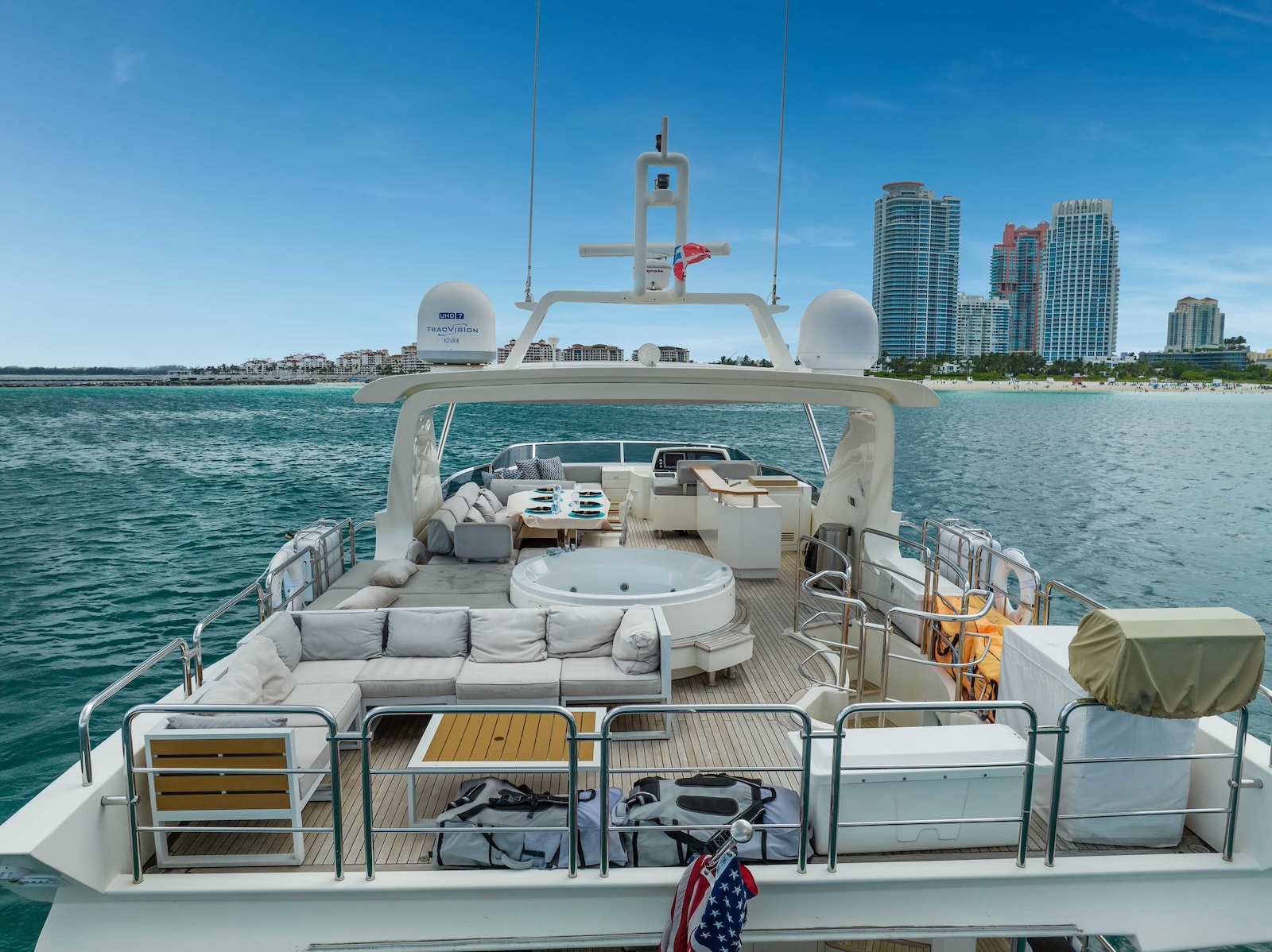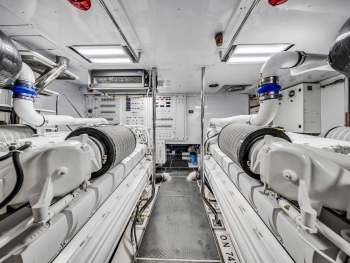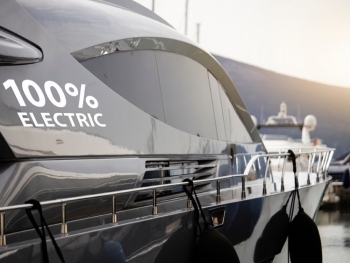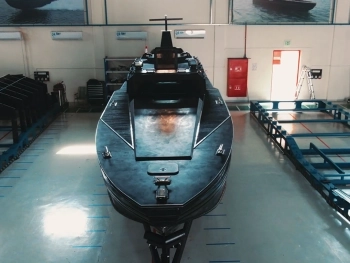A beautiful yacht may turn heads at the marina - but true excellence lies beneath the surface.
What really determines whether a yacht can handle rough seas, long passages, and changing weather isn’t just its looks or price tag - it’s engineering.
Seaworthiness is the blend of design, construction, and balance that ensures a vessel performs safely and predictably at sea. Whether you’re buying your first cruiser or considering an innovative model like Perulla, understanding the fundamentals of seaworthiness will help you make a smarter, more confident purchase.
1. What “Seaworthy” Really Means
In simple terms, a seaworthy yacht is one that can safely navigate its intended waters - coastal, offshore, or oceanic - without compromising stability, strength, or comfort.
The Core Elements of Seaworthiness
- Structural Integrity – The yacht must withstand stresses from waves, wind, and loading.
- Stability & Balance – It must resist capsizing and return to upright equilibrium after heeling.
- Buoyancy & Watertightness – The hull must keep water out and maintain positive flotation.
- Maneuverability – A seaworthy yacht should steer predictably and handle smoothly even in rough seas.
- System Reliability – Engines, steering, and electrical systems must perform consistently under duress.
Every yacht’s seaworthiness depends on its intended use: a coastal cruiser doesn’t need the same ruggedness as a transoceanic explorer.
2. Hull Design: The Foundation of Seaworthiness
The hull is a yacht’s backbone - shaping how it moves, resists forces, and interacts with the sea.
2.1 Hull Shape and Type
Each hull shape has trade-offs between speed, comfort, and stability:
| Hull Type | Description | Advantages | Limitations |
|---|---|---|---|
| Displacement | Moves through the water by displacing it | Smooth motion, efficient long-range cruising | Slower top speed |
| Semi-Displacement | Hybrid of displacement and planing | Balance of speed and efficiency | Slightly more fuel use |
| Planing | Rides on top of water at speed | Fast, thrilling performance | Less stable in rough seas |
| Catamaran / Multihull | Two or more hulls | Exceptional stability, space, fuel efficiency | Wider beam, more docking space needed |
Key takeaway: For open-sea travel, displacement or semi-displacement hulls are usually preferred. For coastal cruising and performance, planing or catamaran hulls offer greater versatility.
2.2 Hull Form & Hydrodynamics
A seaworthy hull minimizes resistance and maximizes control.
- Fine entry bows cut through waves smoothly.
- Flared bows deflect spray and add buoyancy forward.
- Fuller stern sections enhance planing and lift.
- Deep-V designs slice through chop, while rounded bilges improve rolling comfort.
Yacht engineers use computational fluid dynamics (CFD) to simulate how hulls interact with waves, optimizing shape before construction.
3. Materials & Construction Quality
The material a yacht is made from directly affects its strength, flexibility, and lifespan.
3.1 Common Yacht Materials
| Material | Characteristics | Pros | Cons |
|---|---|---|---|
| Fiberglass (GRP) | Lightweight, moldable composite | Easy to shape, low maintenance | Can crack under extreme stress |
| Aluminum | Strong and corrosion-resistant | Ideal for explorers, light and durable | Costly, requires specialized welding |
| Steel | Extremely strong and forgiving | Excellent for large expedition yachts | Heavy, requires upkeep |
| Polyethylene (HDPE) | Innovative, impact-resistant thermoplastic | Flexible, virtually unsinkable, recyclable | Requires specialized welding techniques |
Boutique builders like Perulla are pioneering polyethylene construction - combining durability with design innovation.
This material’s flexibility and resilience make it exceptionally impact-tolerant and low-maintenance, ideal for owners prioritizing long-term reliability.
4. Stability: The Art of Balance
A yacht’s ability to resist rolling or capsizing depends on center of gravity (CG) and center of buoyancy (CB).
- Metacentric Height (GM): A key measure of stability - too low, and the yacht feels tender; too high, and it rolls uncomfortably.
- Ballast & Weight Distribution: Proper placement of fuel, tanks, and equipment maintains balance.
- Hull Beam & Shape: Wider beams increase form stability; deeper keels improve righting moments.
Types of Stability
- Static Stability: How a yacht resists tipping when stationary.
- Dynamic Stability: How it behaves under way - in motion and waves.
The best designs balance comfort with safety - responsive enough for agility, stable enough for security.
5. Propulsion, Power, and Handling
Reliable propulsion isn’t just about speed - it’s about control and predictability.
5.1 Engine Placement & Power-to-Weight Ratio
- Engines should be centrally located to maintain trim and reduce vibration.
- A proper power-to-weight ratio ensures enough thrust without excess fuel consumption.
- Twin-engine setups offer redundancy and easier maneuvering.
5.2 Steering & Rudder Design
A seaworthy yacht should maintain course stability in following seas and handle predictably at slow speeds.
- Larger rudders improve low-speed control but add drag.
- Some modern yachts use joystick systems for precision docking.
5.3 Hybrid and Electric Systems
Eco-conscious builders now integrate hybrid propulsion, solar panels, and regenerative systems - improving range and reducing emissions without sacrificing reliability.
6. Structural Integrity & Load Management
A yacht must endure constant flexing and shock loads.
Key Construction Considerations
- Bulkheads and Frames: Reinforce the hull against torsion and slamming forces.
- Stringers: Longitudinal stiffeners that distribute stress along the hull.
- Bonding & Welding Quality: Proper fusion of materials prevents weakness at joints.
- Watertight Compartments: Contain flooding in case of hull breach.
Yacht builders like Perulla invest in advanced welding standards and double-sided extrusion techniques to ensure strength, precision, and safety.
7. Safety Systems and Redundancy
Engineering seaworthiness extends beyond structure - it includes backup systems that ensure resilience under failure.
Critical Redundancies
- Dual bilge pumps with separate power sources.
- Redundant navigation electronics and autopilot systems.
- Fire suppression and emergency power backups.
- Watertight doors and compartmentalization.
A seaworthy yacht isn’t one that never encounters problems - it’s one that remains manageable and safe even when problems occur.
8. Comfort and Seakeeping
Good seakeeping isn’t just safety - it’s comfort.
A yacht that slams or rolls excessively may technically survive the sea but wear down its crew and guests.
Design Features That Improve Comfort
- Stabilizers (active fins or gyros) to reduce roll.
- Soft chine or rounded bilge designs to smooth motion.
- Proper weight distribution for consistent trim.
Yachts like Perulla are engineered to merge practical stability with modern comfort, proving that durability and elegance can coexist.
9. Certification and Standards
Reputable builders follow international standards that verify seaworthiness, such as:
- CE Certification (EU Recreational Craft Directive)
- ISO 12217 Stability and Buoyancy Standards
- American Bureau of Shipping (ABS)
- Lloyd’s Register or RINA
These ensure the yacht meets design and construction benchmarks for its intended sea conditions (A: Ocean, B: Offshore, C: Coastal, D: Inland).
Seaworthiness isn’t just a checklist - it’s a philosophy of design and integrity.
It’s the quiet confidence that your yacht can handle what the ocean delivers - not just in calm waters, but when conditions demand excellence.
From hull form to material science, from balance to safety systems, every decision in yacht engineering affects how the vessel behaves at sea.
Builders like Perulla are redefining this standard - blending advanced materials, innovative welding methods, and intelligent design to create yachts that are both modern and unshakably seaworthy.
Whether you’re buying new, pre-owned, or custom-built, remember:
A truly seaworthy yacht isn’t just built to impress - it’s built to endure.












